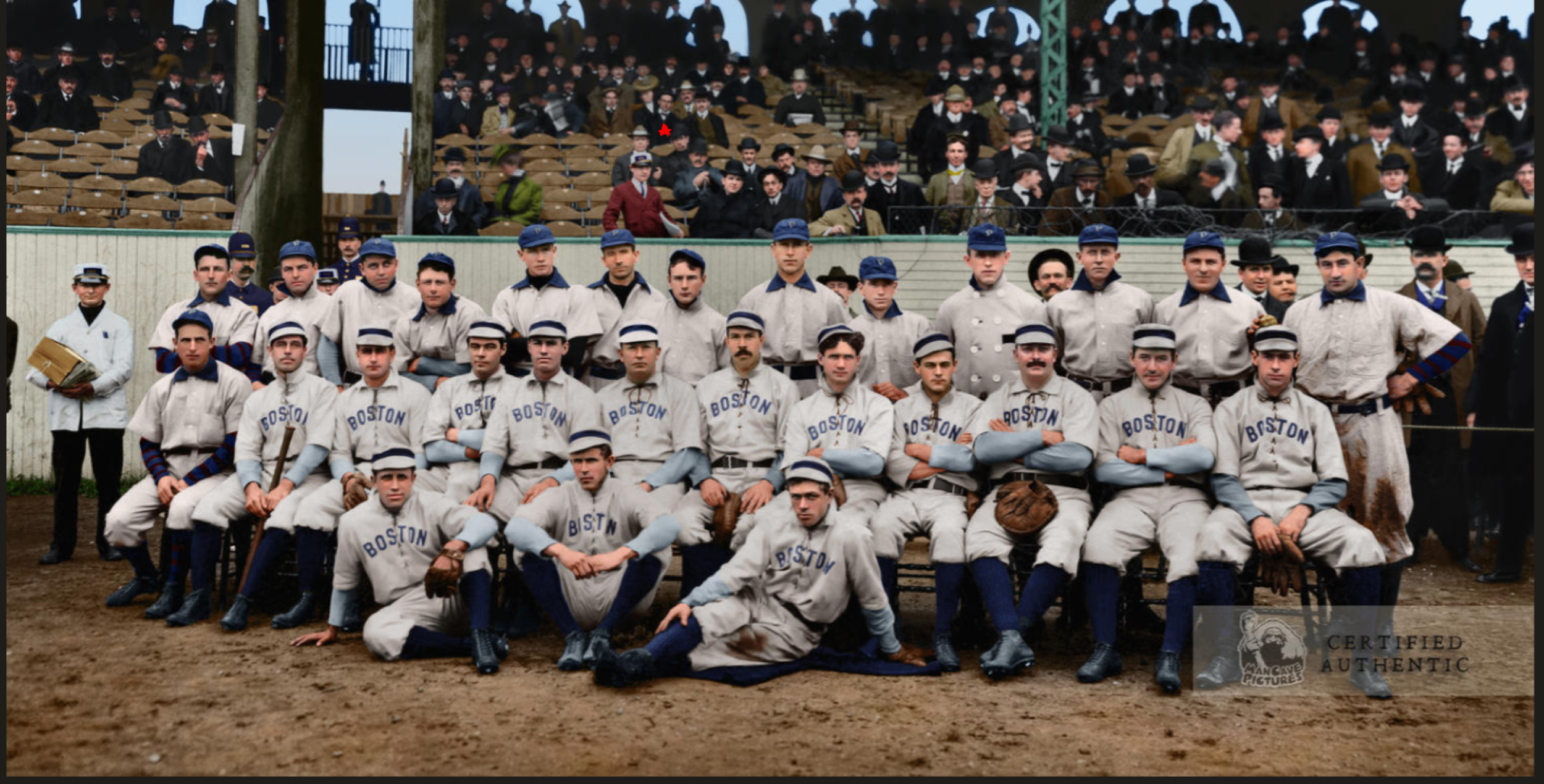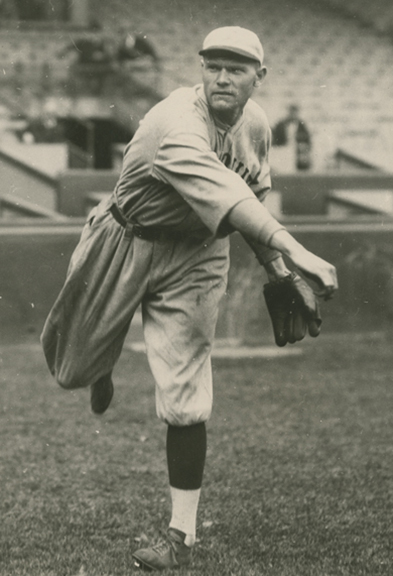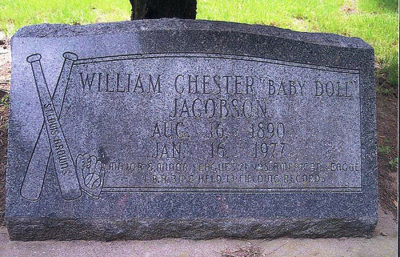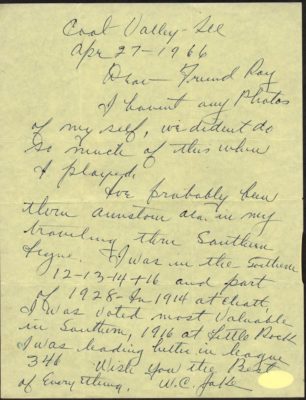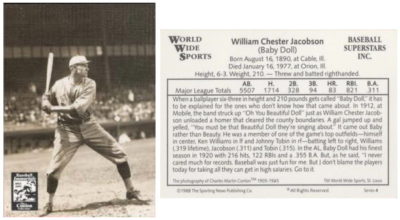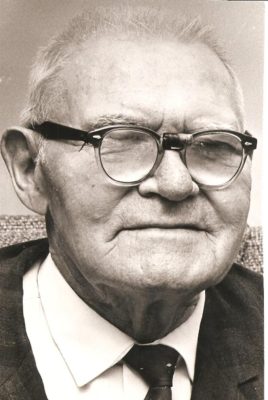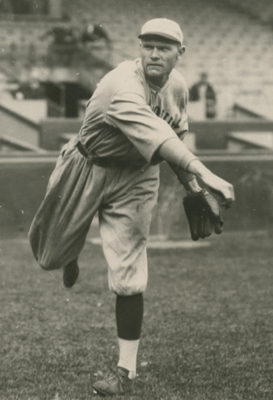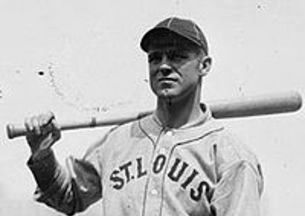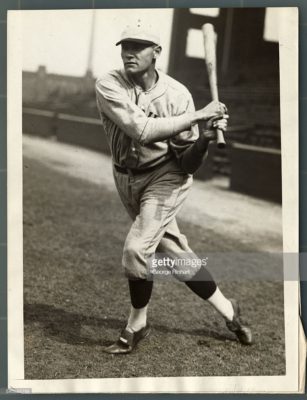Featured Photo Above:
Combined 1903 World Series Photo: Pittsburgh Pirates and Boston Pilgrims
(Color Restoration by Chris Whitehouse of Mancave Pictures)
Baseball History Comes Alive Now Ranked As a Top Five Website by Feedspot Among All Baseball History Websites and Blogs!
(Check out Feedspot's list of the Top 35 Baseball History websites and blogs)

Guest Submissions from Our Readers Always Welcome! Click for details
Subscribe to Baseball History Comes Alive! to receive new posts automatically
“Baby Doll” Jacobson and 1920s St. Louis Browns” Photo Gallery
Click on any image below to see photos in full size and to start Photo Gallery:
Another Edition of Baseball’s Great Nicknames: “Baby Doll” Jacobson!
“Although he never received more than a passing glance in the Hall of Fame voting, Baby Doll Jacobson’s credentials are superior to many of the old-timers who have been enshrined.” –The Sporting News, 1977
In my last post, I mentioned that I’m reading a great new book sent to me by one of our readers, Vicki Martin: “The St. Louis Browns, The Story of a Beloved Team.” One of the Browns featured in the book was a player from the small town of Cable, Illinois in the western part of the state (not far from Don Stokes territory!), named “Baby Doll” Jacobson. I’m sure many of our Dead Ball Era fans are familiar with him.
As I soon found out, this post could also go into the “Baseball’s Forgotten Stars” category, too; as Baby Doll was quite a ball player. Be sure to read to the end to find out how Baby Doll Jacobson acquired his great nickname!
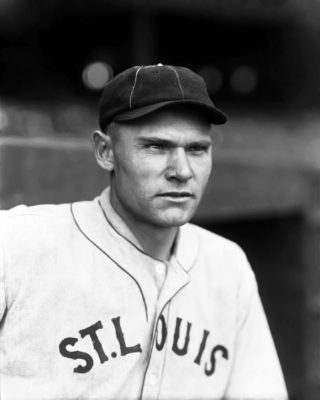
The son of Swedish immigrant parents, William Chester Jacobson played 11 seasons in the majors, principally with the St. Louis Browns, between 1915 and 1927. He also played for the Tigers (1915), Red Sox (1926–1927), Indians (1927), and Athletics (1927). Over his career, he hit .311 (97th all-time), with 83 home runs, 818 RBIs, 86 stolen bases, and a .357 on-base percentage. He struck out only 410 times in 6,067 plate appearances. A big man at 6’ 3”, 215 pounds, Baby Doll was actually bigger than Babe Ruth.
Baby Doll could hit for average and power. During his prime years, he routinely finished in the top-10 in most offensive categories. He hit over .300 in seven straight seasons, including .355 in 1920 and .352 in 1921, and finished second behind Babe Ruth with 122 RBIs in 1922. Twice he finished among the top ten in the American League MVP voting.
During the eight year span from 1919 to 1926, Jacobson collected 1,473 hits, ranking sixth in the majors behind Hall-of-Famers Sam Rice, Rogers Hornsby, Harry Heilmann, George Sisler, and Ty Cobb; and ahead of HOFers Zack Wheat, Tris Speaker, Eddie Collins, Dave Bancroft, and Max Carey.
In 1922, Jacobson helped lead the Browns (93-61) to one of the best seasons in the team’s history. With George Sisler batting .420, they finished in second place, just one game behind the Yankees, Jacobson contributed a .317 batting average, .379 on-base percentage, and 102 RBIs. He was among the league leaders in triples (2nd), RBIs (5th), and stolen bases (7th).
Baby Doll was also considered one of the best defensive outfielders of his era. He set 13 defensive records during his career; and his 488 putouts in 1924 stood as a major league record until 1928 and an American League record until 1948. He also led the major leagues with nine double plays started from the outfield in 1925.
So how did he get his great nickname? While playing for Mobile Sea Gulls in the Southern Association on Opening Day of the 191 2 season, the band began playing the popular song, “Oh, You Beautiful Doll”, as Jacobson came to the plate. As Baby Doll later recalled: “Well, I led off with a home run on the first pitch, and a lady sitting behind the plate jumped up and shouted, ‘You must be that beautiful doll they were talking about.’ The name stuck with me and that was it.” The band continued that practice from that time on whenever he came to the plate and for the rest of his life, William Chester Jacobson was known as “Baby Doll” Jacobson!
Gary Livacari
Photo Credits: All from Google search
Information: Excerpts edited from “The St. Louis Browns: The Story of a Beloved Team;” and from the Baby Doll Jacobson Wikipedia page.
Check out my two books, both now available on Amazon in e-book and paperback: “Paul Pryor in His Own Words: The Life and TImes of a 20-Year Major League Umpire” and “Memorable World Series Moments.” All profits go to the Illinois Veterans Foundation
We are a participant in the Amazon Services LLC Associates Program, an affiliate advertising program designed to provide a means for us to earn fees by linking to Amazon.com and affiliated sites. Click here to view Amazon’s privacy policy
